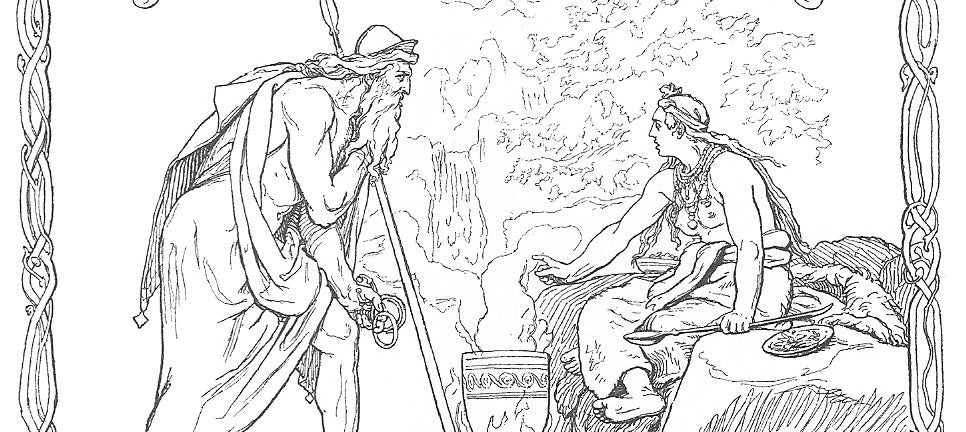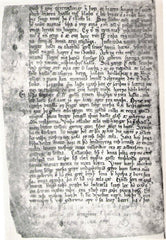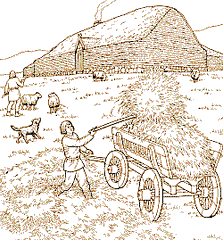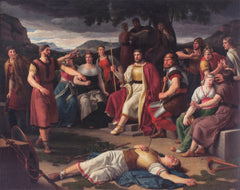on all orders over $100
on all orders over $100

Norse Mythology was the pre-christian pagan belief system of the Northern Germanic peoples who inhabited Scandinavia in the Viking age. During this time the religion didn't have an official name, simply being known as the 'tradition'. It was only after the majority of the Scandinavian population had been covered to Christianity that the practitioners of the old ways began to become known as Heathens or Pagans. The terms originate from the latin meaning 'country dweller' or 'heath dweller' since it was mainly the more isolated country folk outside of the cities which stayed true to the old ways.
This was a polytheistic religion with many different Norse Gods that were lead by the Allfather, Odin. These Gods had various roles in their societies and represented different aspects of life that many people could relate to in the Viking age. The religion tied in with Norse Cosmology which described the nine worlds, all connected by the life tree, Yggdrasil. The Vikings also believed that the universe would end with a prophecy called Ragnarok.
Understanding the complexities of the Norse belief system as it was understood back then, almost a thousand years after the end of the Viking age, is no easy task. Especially since it was predominately an oral tradition and very little of it was written down until hundreds of years later.
Two of the main sources of our knowledge come from the eddic (from the Poetic Edda) and skaldic poetry, these are collections of poems and sagas which tell stories of the many Gods and their escapades. Unfortunately many of these sources assume prior knowledge of the Gods and their backstories, which makes it extremely difficult to fill in the gaps. The family trees of the Norse Gods were notoriously complicated with many relations being up for debate and often incestuous, which only adds to the confusion.

A page from the Poetic Edda
One of the more complete accounts of Norse mythology was written by Snorri, who was an Icelandic poet, politician and historian. His work brings together the complicated and tangled stories of the earlier Norse writings into a more easily understandable and structured variant. He was alive much closer to the Viking age than modern day historians, and will have had more authentic oral knowledge that was passed down the generations. It should however be noted that this was after the end of the Viking age and these writings come from a christian context, therefore they may differ slightly from the authentic Viking age beliefs.

Snorri Sturluson - Christian Krohg, 1890
The Vikings were a resourceful, hardy and pioneering people who inhabited Scandinavia during the Viking age which lasted from the 8th century to the 11th century AD. They had a sea faring culture which saw them travel from their home in Scandinavia as far as North America and Baghdad, making settlements in newly discovered and often inhospitable lands.
Like many religions, Norse mythology was inextricably linked into the everyday lives of the Vikings. Numerous stories were relatable to their experiences and hardships, with separate gods and goddesses for war, love, famine, poetry and death. It is thought that even after the introduction of christianity into the region in around the 11th century the norsemen still kept most of their existing beliefs and simply included christ as one of their many gods, meaning the two belief systems existed side by side for some time.

Life in the viking age - anonymous
There is a rough timeline of events that we can discern from Norse Mythology in which the creation and destruction of their universe is described. There were roughly four stages to this; the creation of the worlds and all life, the creation of time, the destruction of the worlds during Ragnarok and the rebirth of a new world from the sea.
In Snorri's version of events before there was life there were just two realms, Muspelheim and Niflheim which were referred to as the primordial realms. It was said that the fire extended from Muspelheim and melted the ice which released two beings; Audhumla and Ymir, the first giant. Audhumla then licked the to melt it further and uncovered Buri. This was the father who son, Borr started the family line of the first Gods; Odin, Ve and Vili. The three of them then killed Ymir and created Midgard from his body. The earth was made from his flesh, the sky made from his skull, the sea made from his blood and the mountains made from his bones. It was then that the first two humans, Ash and Embla were created from an ash tree.
The two main tribes of Gods in Norse Mythology were the Aesir, which consisted of well known Gods such as; Odin, Thor, Loki and Frigg, Baldr and Tyr, and the Vanir which were considered lesser Gods, consisting of; Njord, Freya and Freyr.

Aesir gods gathered a round the body Baldr - Christoffer Wilhelm Eckersberg, 1817
It was mentioned in many Norse sagas that there had once been a war between the two tribes, thought to be due to differences in their views over the use of magic, incest and culture. The Aesir thought many of the practices of the Vanir to be uncivilised and inappropriate. After the war there was a peace deal between the two sides, which was upheld by an exchange of hostages to ensure a lasting peace.
If you enjoyed reading or if you have anything to add please leave a comment below.
Leave a comment